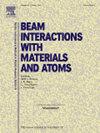基于深度学习的同步辐射光谱检测脉冲堆积校正电子结构
IF 1.4
3区 物理与天体物理
Q3 INSTRUMENTS & INSTRUMENTATION
Nuclear Instruments & Methods in Physics Research Section B-beam Interactions With Materials and Atoms
Pub Date : 2025-07-04
DOI:10.1016/j.nimb.2025.165730
引用次数: 0
摘要
同步加速器光源由于其高光子通量和宽波长范围,已成为微观结构分析、材料表征和动态过程观察不可缺少的工具。然而,光子通量的增加带来了在光谱检测中保持能量分辨率的挑战,特别是由于高计数率下的脉冲堆积。本文提出了一种将深度学习算法与FPGA硬件相结合的新型混合架构,以实现同步辐射光谱探测器的实时脉冲堆积校正。通过在FPGA中使用Transformer算法并利用基于gpu的再训练来适应不同的计数率,系统动态优化了能量分辨率。利用VortexEX90探测器数据进行的实验验证表明,该方法在入射光子为22 keV的情况下,在60 kcps下可获得约126.8 eV的能量分辨率,在1 Mcps下可获得135.5 eV的能量分辨率,确保了在广泛计数率范围内的良好性能。这项工作为脉冲堆积校正提供了一种可扩展、高效的解决方案,提高了高计数率条件下同步加速器光谱检测的能力。本文章由计算机程序翻译,如有差异,请以英文原文为准。
Deep learning-based electronics architecture for pulse pile-up correction in synchrotron radiation spectroscopic detection
Synchrotron light sources have become indispensable tools for microstructural analysis, material characterization, and dynamic process observation, owing to their high photon flux and broad wavelength range. However, the increased photon flux introduces challenges in maintaining energy resolution in spectroscopic detection, particularly due to pulse pile-up at high count rates. This paper proposes a novel hybrid architecture that integrates deep learning algorithms with FPGA hardware to achieve real-time pulse pile-up correction in synchrotron radiation spectroscopic detectors. By employing the Transformer algorithm within an FPGA and leveraging GPU-based retraining to adapt to varying count rates, the system dynamically optimizes energy resolution. Experimental validation with data from the VortexEX90 detector demonstrates that the proposed approach achieves an energy resolution of approximately 126.8 eV at 60 kcps and 135.5 eV at 1 Mcps for incident photons of 22 keV, ensuring good performance across a wide range of count rates. This work provides a scalable, high-efficiency solution for pulse pile-up correction, advancing the capabilities of synchrotron spectroscopic detection under high-count-rate conditions.
求助全文
通过发布文献求助,成功后即可免费获取论文全文。
去求助
来源期刊
CiteScore
2.80
自引率
7.70%
发文量
231
审稿时长
1.9 months
期刊介绍:
Section B of Nuclear Instruments and Methods in Physics Research covers all aspects of the interaction of energetic beams with atoms, molecules and aggregate forms of matter. This includes ion beam analysis and ion beam modification of materials as well as basic data of importance for these studies. Topics of general interest include: atomic collisions in solids, particle channelling, all aspects of collision cascades, the modification of materials by energetic beams, ion implantation, irradiation - induced changes in materials, the physics and chemistry of beam interactions and the analysis of materials by all forms of energetic radiation. Modification by ion, laser and electron beams for the study of electronic materials, metals, ceramics, insulators, polymers and other important and new materials systems are included. Related studies, such as the application of ion beam analysis to biological, archaeological and geological samples as well as applications to solve problems in planetary science are also welcome. Energetic beams of interest include atomic and molecular ions, neutrons, positrons and muons, plasmas directed at surfaces, electron and photon beams, including laser treated surfaces and studies of solids by photon radiation from rotating anodes, synchrotrons, etc. In addition, the interaction between various forms of radiation and radiation-induced deposition processes are relevant.

 求助内容:
求助内容: 应助结果提醒方式:
应助结果提醒方式:


